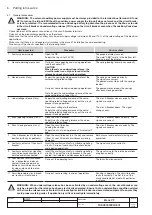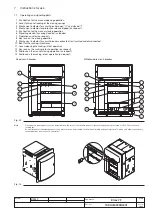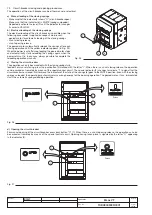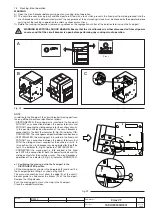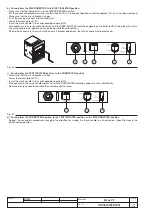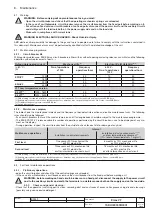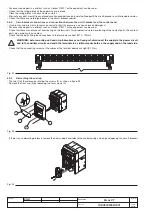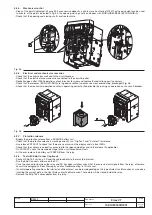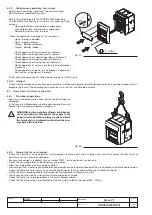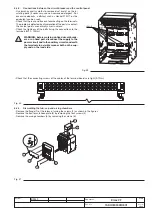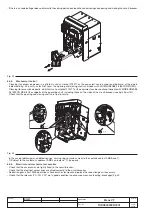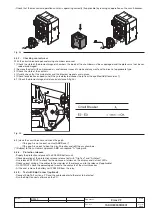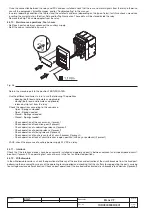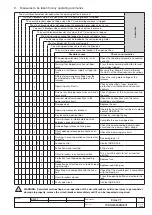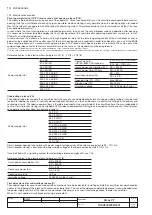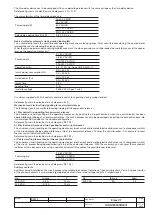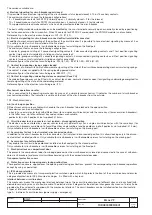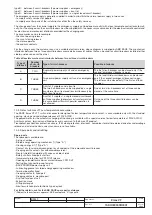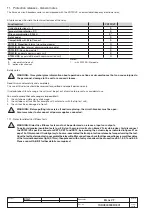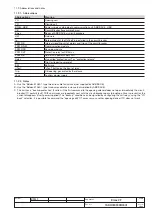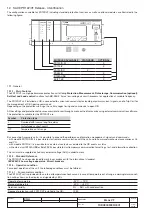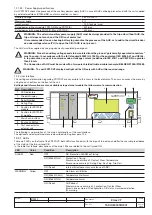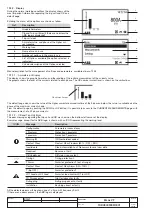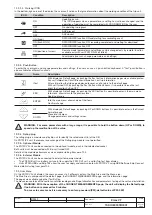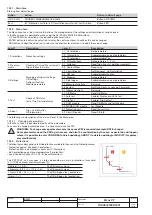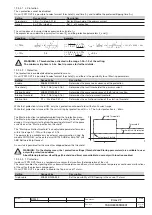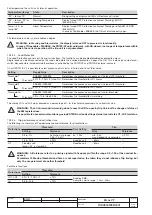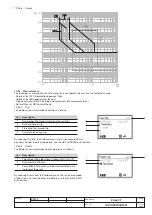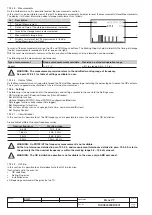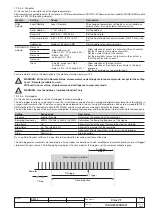
B2342
Emax VF
28/66
Doc. no.
Model
Apparatus
Scale
Page No
1SDH000909R0001
10. Accessories
10.1. Electrical accessories
Shunt opening/closing (YO/YC) and second shunt opening release (Y02)
This allows remote opening or closing control of the apparatus. Given the characteristics of the circuit-breaker operating mechanism,
opening (with the circuit-breaker closed) is always possible, whereas closing is only possible when the closing springs are loaded.
Most of the releases can operate with either direct or alternating current. This release carries out an instantaneous service (*), but can
be supplied permanently (**).
In uses where the shunt closing release is supplied permanently, to carry out the circuit-breaker reclosing operation after opening,
it is necessary to momentarily de-energize the shunt closing release (the circuit-breaker operating mechanism reclosing is, in fact,
fitted with an antipumping device).
In some versions it is necessary to have a very high degree of safety for the remote opening control of the circuit-breaker, and, in
particular, the duplication of the control circuit of the shunt opening release is required. In order to achieve this, you can fit the SACE
Emax circuit-breakers with a second shunt opening release. The second shunt opening release is located in the same seat as the
undervoltage release and its technical characteristics are the same as the standard shunt opening release
(*) In the case of instantaneous service, the minimum duration of the current impulse must be 100 ms.
(**) In the case of permanent power supply to the shunt opening release, you must wait for at least 30 ms before giving the opening control to the shunt closing release.
Reference figures in the electrical circuit diagrams: YO (4) - YC (2) - YO2 (8)
Power supply (Un)
24 V DC
30 V AC/DC
48 V AC/DC
60 V AC/DC
110-120 V AC/DC
120-127 V AC/DC
220-240 V AC/DC
240-250 V AC/DC
380-400 V AC
440 V AC
Operating limits
(CEI EN 60947-2 Standards)
(YO-YO2) : 70…110% Un
(YC) : 85…110% Un
Inrush power consumption (Ps)
DC = 200 W
Inrush power time ~100 ms
AC = 200 VA
Continuous power (Pc)
DC = 5 W
AC = 5 VA
Opening time (YO - YO2)
(max) 60 ms
Closing time (YC)
60±10 ms
Insulation voltage
2500V 50 Hz (for 1 min.)
Undervoltage release (YU)
The undervoltage release opens the circuit-breaker in the case of a considerable drop or lack of its power supply voltage. It can be used
for remote tripping (by means of normally closed type pushbuttons), as a lock on closing or to control the voltage in the primary and
secondary circuits. The release power supply is therefore branched on the supply side of the circuit-breaker or from an independent
source. Circuit-breaker closing is only allowed with the release powered (the closing lock is carried out mechanically). Most releases
can operate with either direct or alternating current.
Power supply (Un)
24 V DC
30 V AC/DC
48 V AC/DC
60 V AC/DC
110-120 V AC/DC
120-127 V AC/DC
220-240 V AC/DC
240-250 V AC/DC
380-400 V AC
440 V AC
Circuit-breaker opening takes place with power supply voltage values of the release equivalent to 35 - 70% Un.
Circuit-breaker closing is possible with power supply voltage of the release equivalent to 85-110% Un.
it can be fitted with a signalling contact for undervoltage release energized (C. aux YU)..
Reference figures in the electrical circuit diagrams: YU (6)
Inrush power consumption (Ps):
DC = 200 W
AC = 200 VA
Continuous power (Pc):
DC = 5 W
AC = 5 VA
Openting time (YU):
≤
80 ms
Insulation voltage
2500V 50 Hz (per 1 min.)
Time delay device for undervoltage release (D)
The undervoltage release can be combined with an electronic time-delay device for installing outside the circuit-breaker, which enables
a delay in the tripping of the release with preset, adjustable times. The use of the delayed undervoltage release is recommended when
the power supply network of the release can be subject to power cuts or short-lived voltage drops, in order to avoid trips.
When it is not supplied, circuit-breaker closing is prevented.

